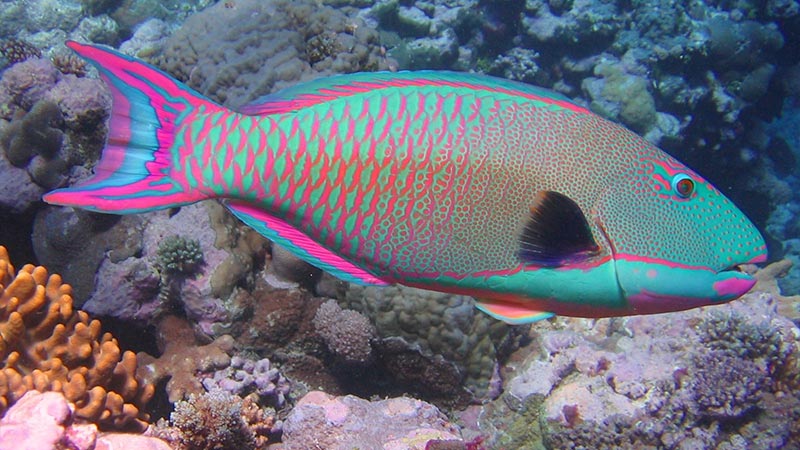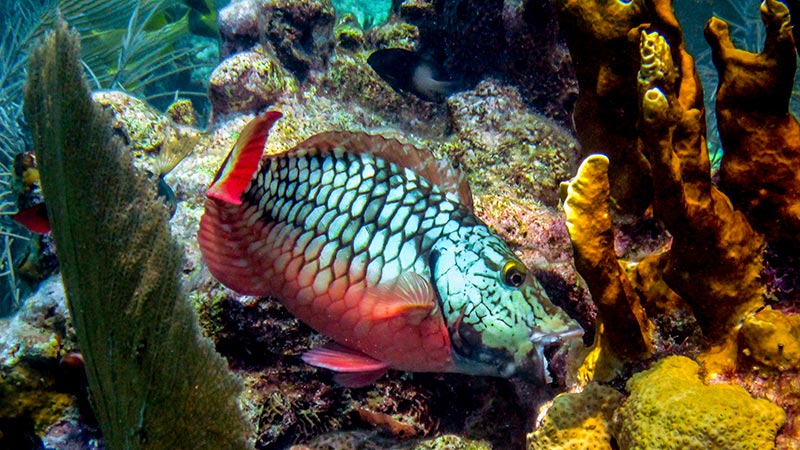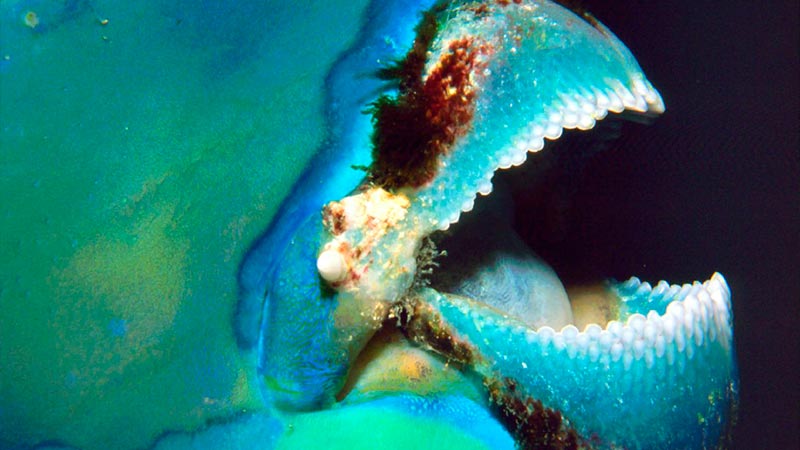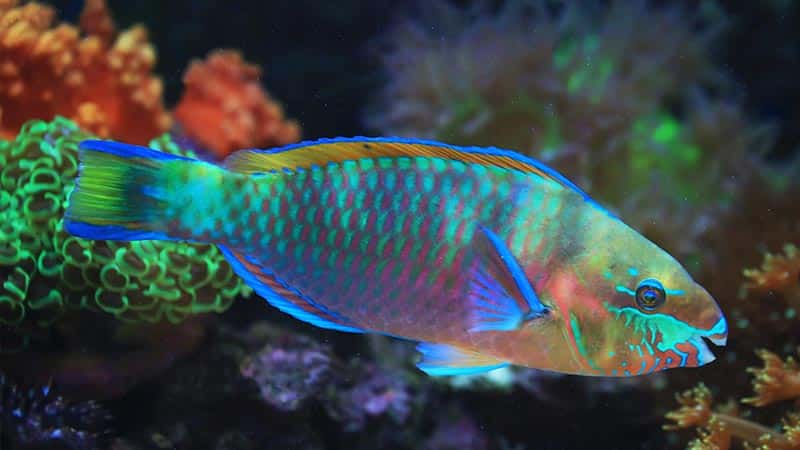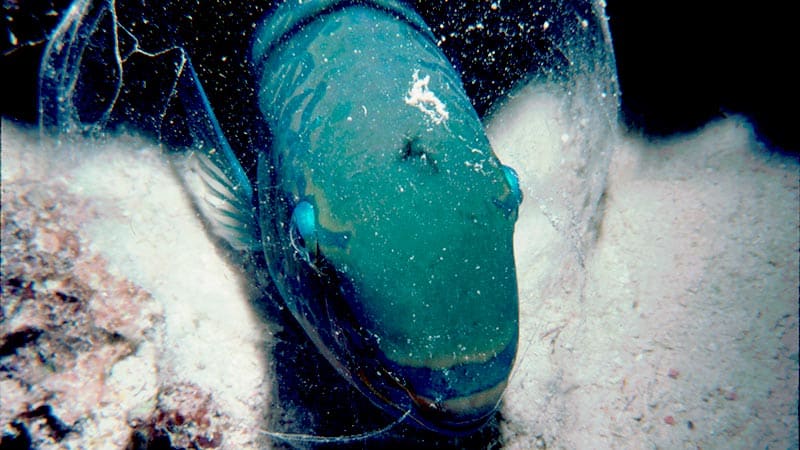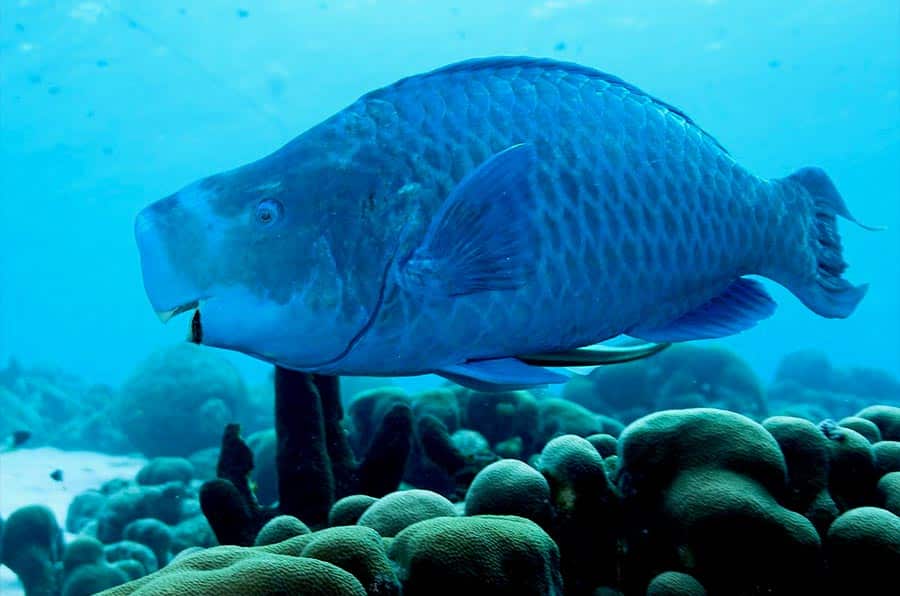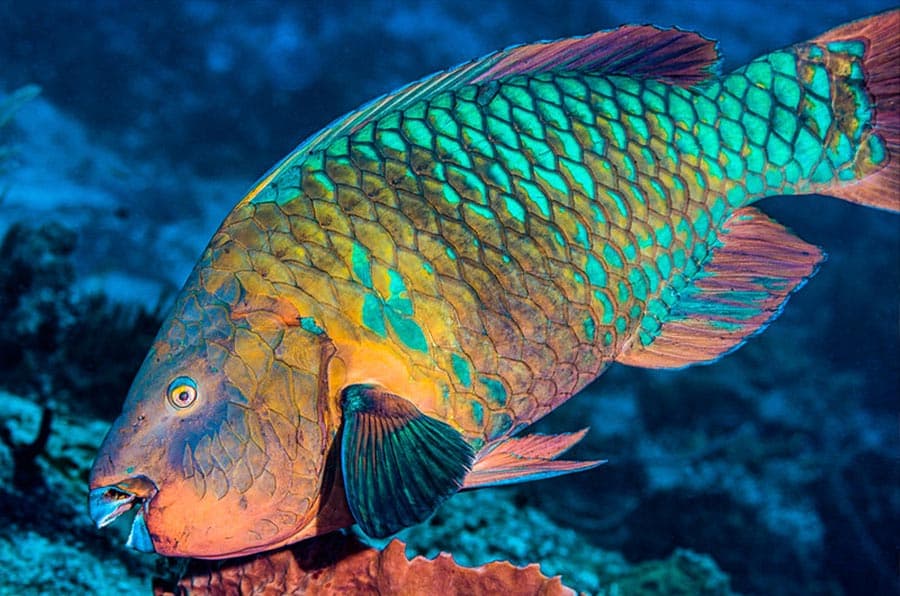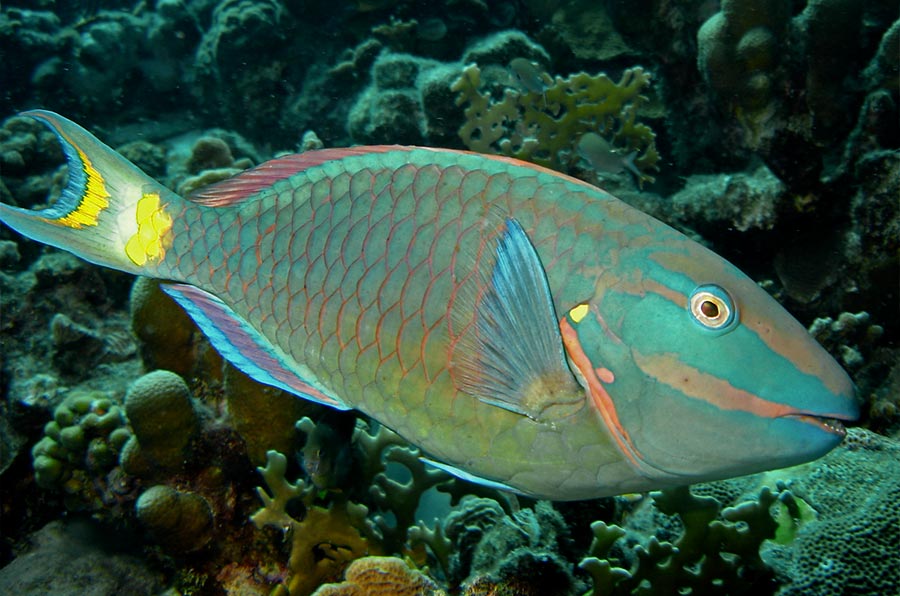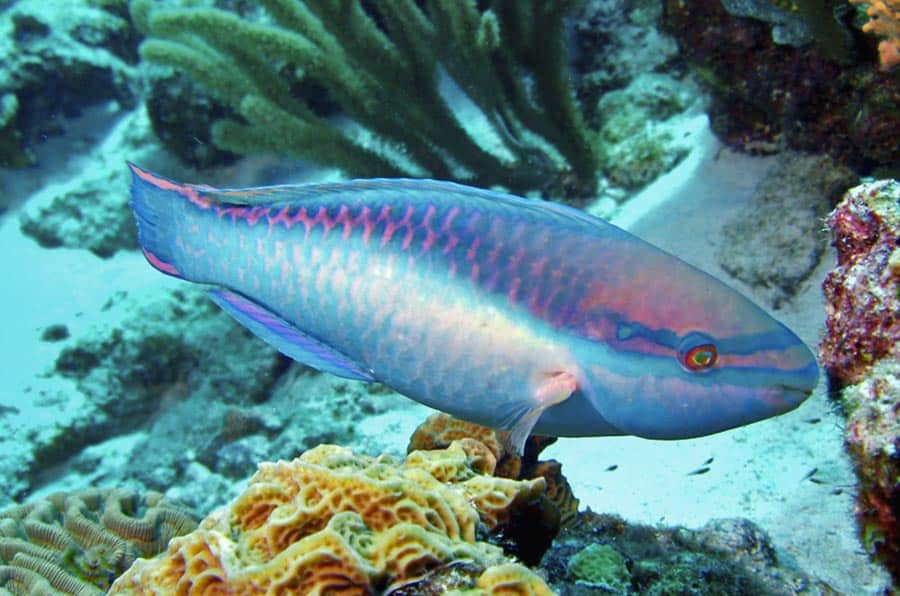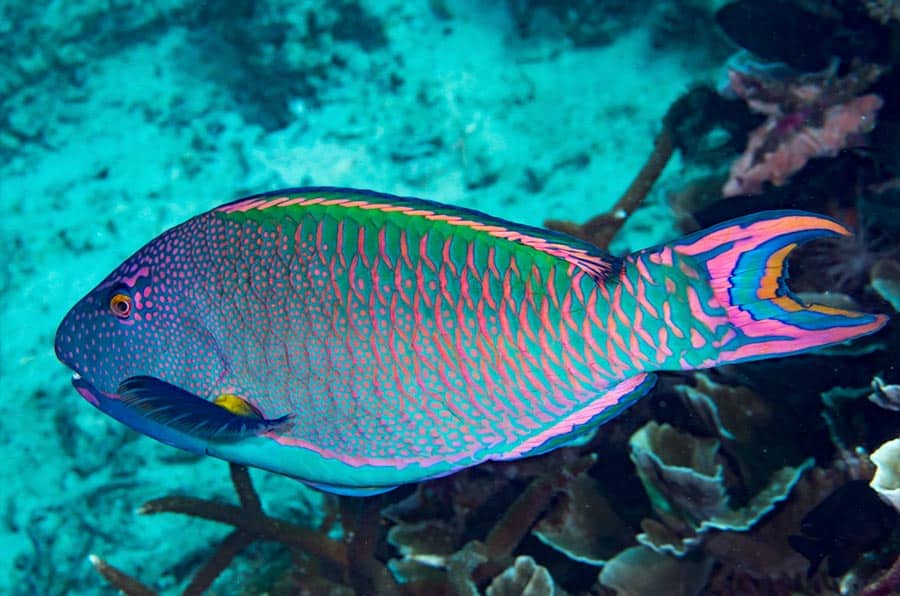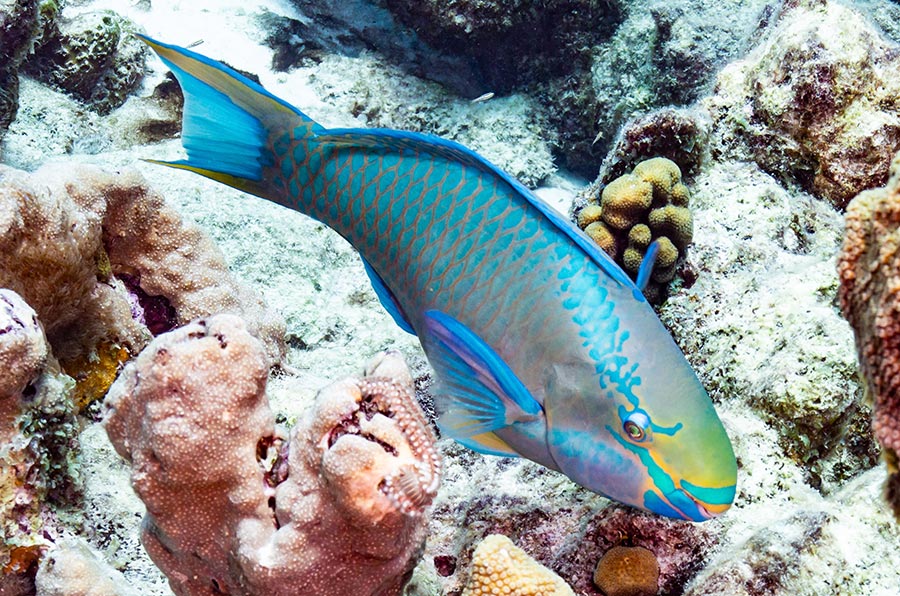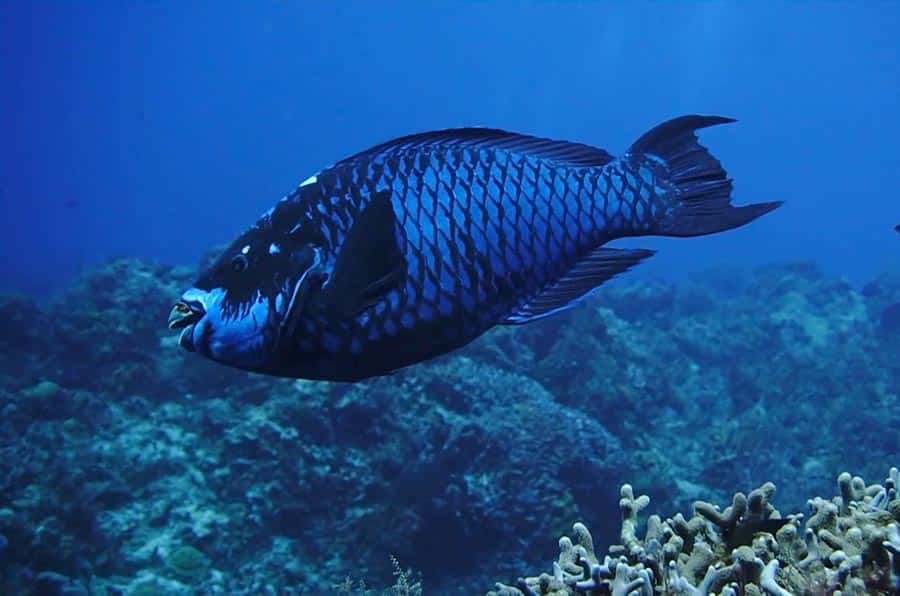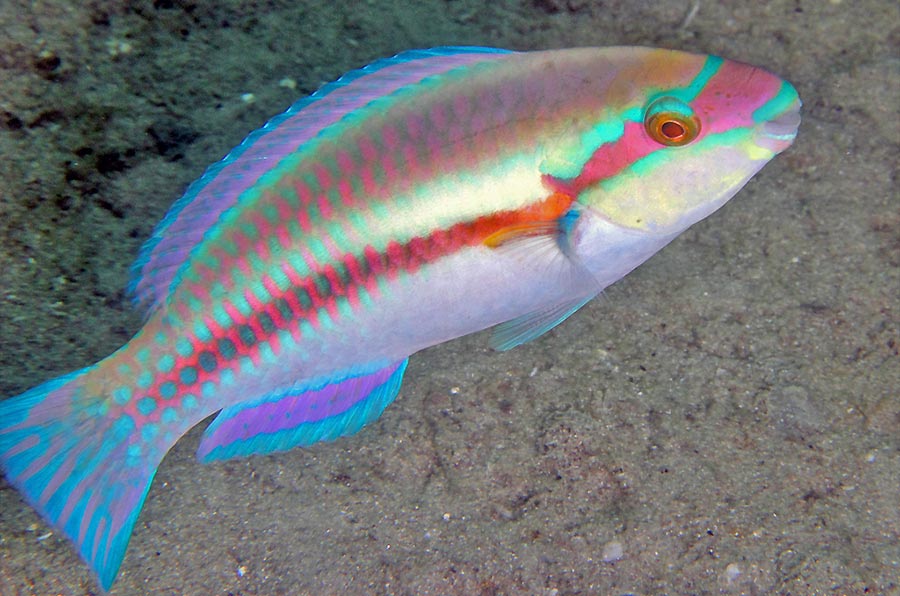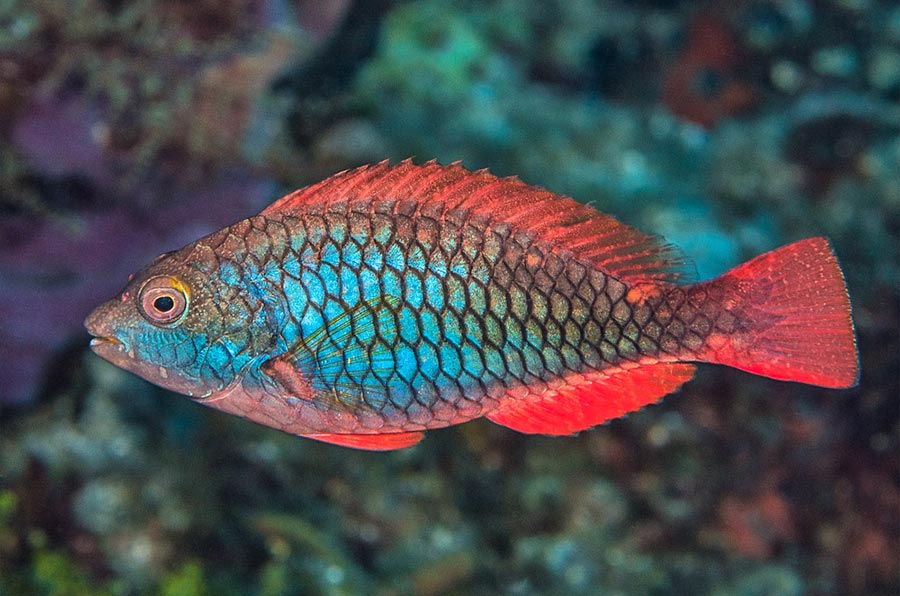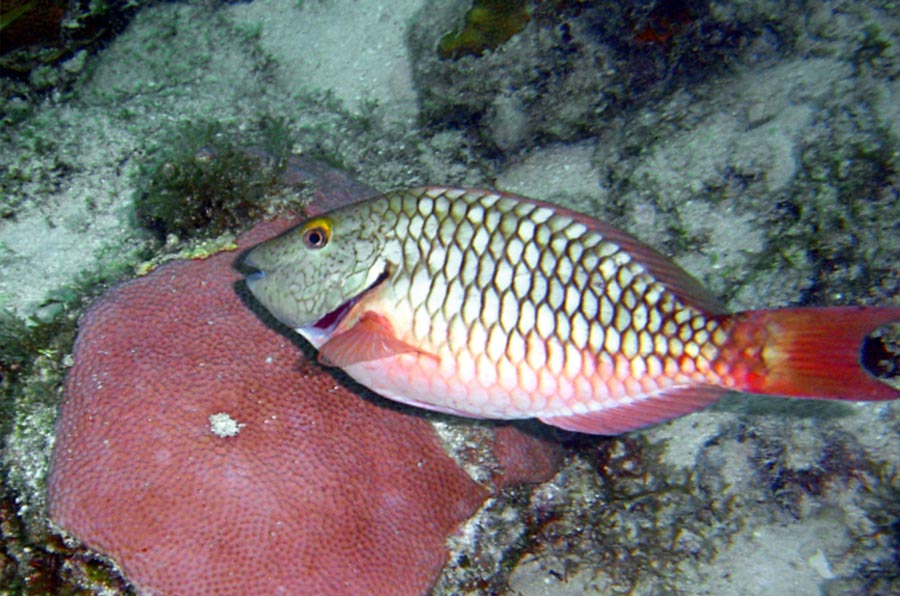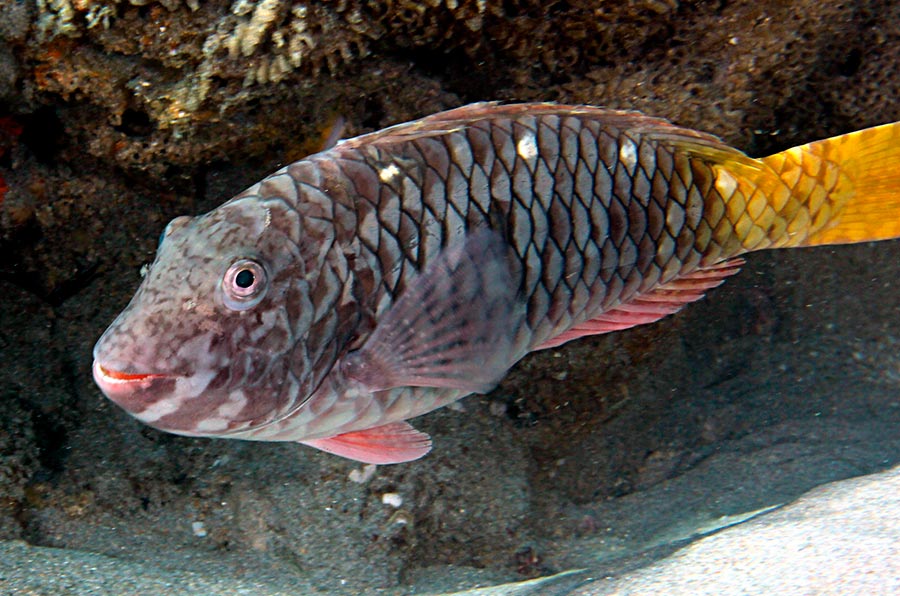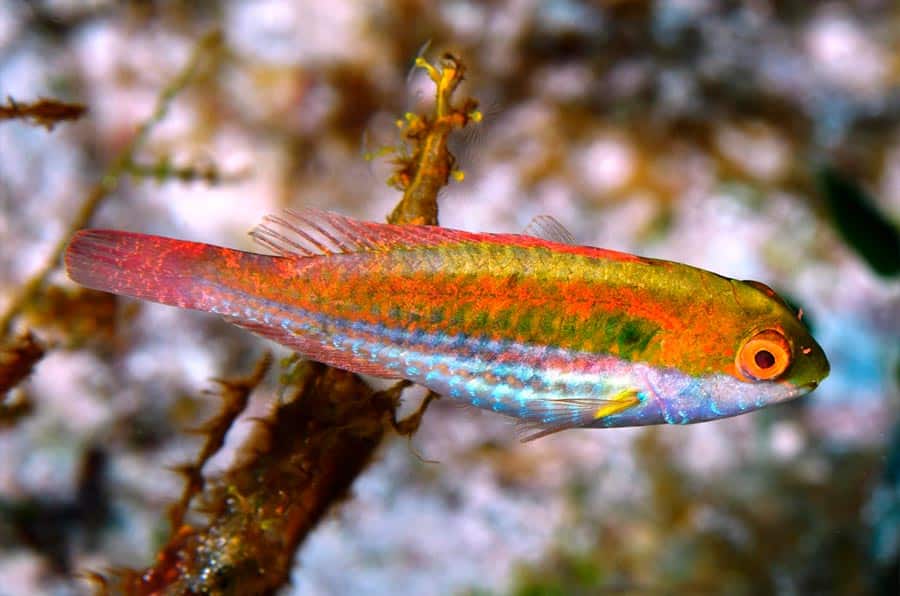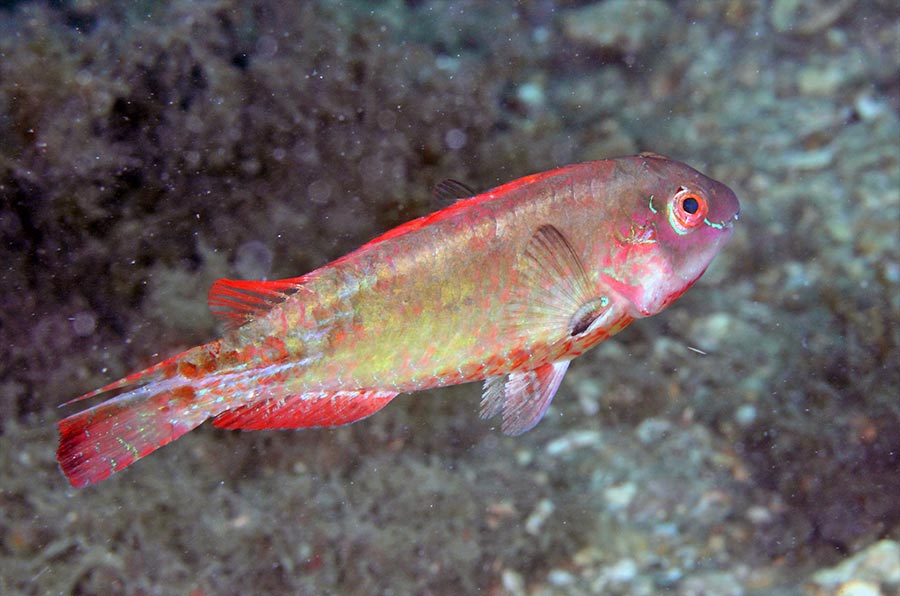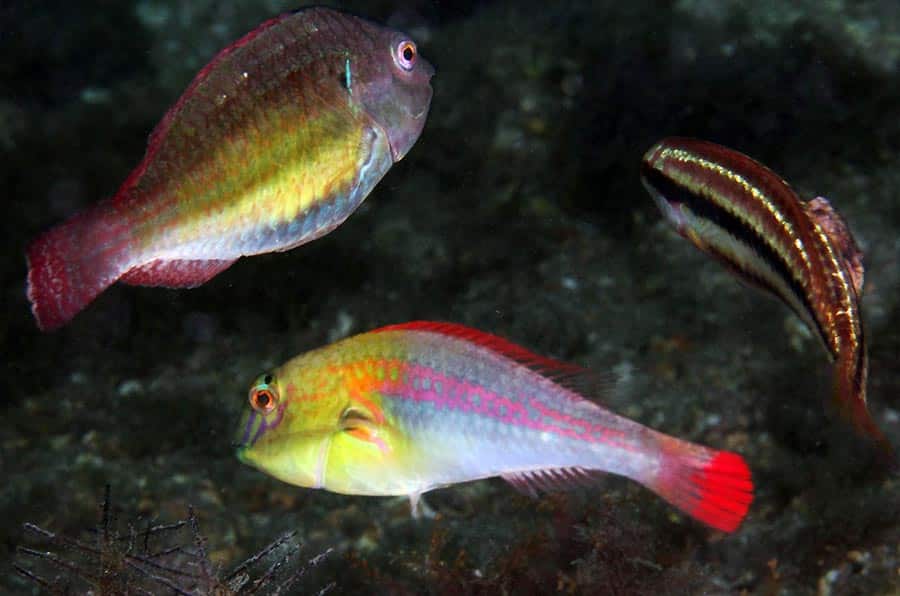1. Basic Parrotfish Facts
1.1. Parrot Fish Scientific Name
Today we are going to delve into the fascinating world of a colorful marine creature, so get ready to discover amazing and fun facts about the parrotfish!
First off, let’s talk about its name. The family Scaridae, or parrotfish, is commonly known as “peces loro” in Spanish. Did you know that its name comes from the Greek word “skairos,” which means “to jump”? And it’s not without reason, as these fish have an impressive ability to jump and strike with their tails.
In ancient times, according to the wise Aristotle and Pliny the Elder in their work “Naturalis Historia,” it was believed that this peculiar fish chewed on seaweed and marine plants (they were not far off). Moreover, some people claimed that it had its own voice and that it was impossible to catch them at night (the latter was a fabrication).
1.2. Where Do Parrotfish Live
There are approximately 90 different species of parrotfish swimming in shallow tropical waters around the world.
After diving in the Caribbean and seeing so many different species of parrotfish here, it may be hard to believe the following fact about parrotfish. The truth is that the majority of them are found in the Indian and Pacific Oceans.
These fish make their homes on rocky coasts, seagrass meadows, and, above all, in colorful coral reefs.
A coral reef for a parrotfish is like a dinner theater for a human. It turns out that many species love to gather near the corals to enjoy a feast—a buffet with delicious bites. Additionally, they also congregate in these areas to reproduce.
1.3. Parrotfish Body Facts
There are incredibly curious data about the parrotfish, such as the fact that they come in all possible sizes! Some species, like the famous rainbow parrotfish, can grow up to 4 feet/1.2 meters in length. However, there are also much smaller parrotfish, like the adorable green-spotted parrotfish, which only measures about 7 inches/18 centimeters.
On the other hand, parrotfish are like an underwater explosion of colors: their bodies are covered in scales and their colors are vibrant. Shades of green and blue prevail, but you will also find splashes of purple and yellow. Some color combinations are so strange and striking that they seem like they are taken from a psychedelic dream. Speaking of psychedelia, some species of parrotfish can change color at will! They are capable of blending in with their surroundings, adopting different patterns to go unnoticed, impressing divers with their “style,” or driving ichthyologists (scientists who study fish) crazy.
The truth is that identifying parrotfish can be quite a challenge. Why? Well, because they drastically change their shape, color, and markings as they go through different stages of development:
- First, there is the juvenile phase, where they are like shy and discreet little fish.
- Then comes the initial phase, where they begin to show their first flashes of bright colors.
- And finally, they become the Hollywood stars of the oceans when they reach the terminal phase, the longest and most colorful of all.
Some even have additional intermediate color phases between the three main ones. It’s madness!
1.4. Parrot Fish Food or The Coral Eating Fish
Another fascinating fact about parrotfish is related to their diet. You may come across articles stating that parrotfish are vegetarian. However, the truth is that they are microphagous.
It is true that they bite, grind, and ingest algae and coral, but what few people actually know is that they consume both because they contain cyanobacteria and other autotrophic microorganisms that are rich in proteins (Clements et al., 2017)
It turns out they have a very peculiar technique for feeding: they nibble on the surface of corals and rocks. This type of feeding is known as “grazing.”
Their secret lies in their beak-like teeth and special plates located at the back of their throat, right in the pharynx. These underwater gourmets are practically eating all the time. They spend 90% of their day taking bites of algae and corals. They are truly tireless devourers!
So, the next time you see parrotfish in action, pay close attention to how they enjoy their feast.




